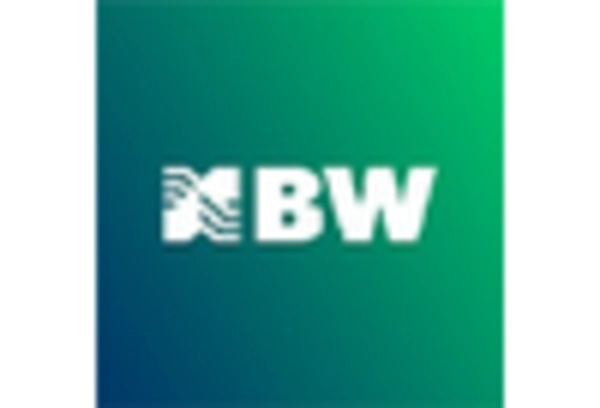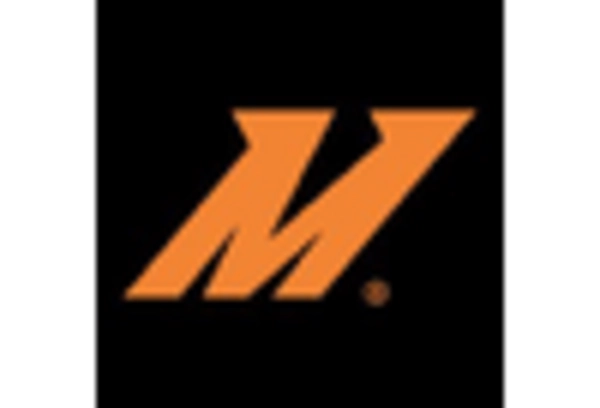Emphasis on Fuel Efficiency
The automotive intercooler market is increasingly shaped by the growing emphasis on fuel efficiency among consumers and manufacturers alike. With rising fuel costs and environmental concerns, there is a strong push for technologies that enhance vehicle efficiency. Intercoolers play a vital role in this context, as they help reduce engine temperatures, thereby improving combustion efficiency. In 2025, it is anticipated that vehicles equipped with advanced intercooler systems will account for over 40% of the automotive market in the US. This trend indicates a robust opportunity for the automotive intercooler market to innovate and provide solutions that align with the demand for more fuel-efficient vehicles.
Growth of Turbocharged Engines
The automotive intercooler market is significantly influenced by the increasing adoption of turbocharged engines across various vehicle segments. Turbocharging enhances engine efficiency and power output, necessitating effective cooling solutions to manage elevated temperatures. In the US, the market for turbocharged vehicles is expected to reach 60% of total vehicle sales by 2025. This trend underscores the importance of intercoolers in maintaining engine performance and longevity. As manufacturers strive to meet consumer demands for fuel efficiency and power, the automotive intercooler market is likely to expand, driven by the need for innovative intercooler designs that can handle the thermal challenges posed by turbocharged engines.
Increasing Focus on Emission Standards
The automotive intercooler market is significantly impacted by the increasing focus on stringent emission standards set by regulatory bodies. As manufacturers strive to comply with these regulations, there is a growing need for efficient cooling solutions that can help reduce emissions while maintaining engine performance. Intercoolers are essential in this regard, as they facilitate better combustion and lower exhaust temperatures. In the US, the automotive industry is expected to invest over $10 billion in technologies aimed at meeting these emission standards by 2025. This investment is likely to bolster the automotive intercooler market, as manufacturers seek to integrate advanced intercooler systems into their vehicles to achieve compliance.
Rising Demand for High-Performance Vehicles
The automotive intercooler market experiences a notable surge in demand due to the increasing popularity of high-performance vehicles. As consumers seek enhanced power and efficiency, manufacturers are compelled to integrate advanced intercooler systems into their designs. This trend is particularly evident in the sports car segment, where performance specifications are paramount. In 2025, the market for high-performance vehicles in the US is projected to grow by approximately 15%, driving the need for efficient cooling solutions. Consequently, the automotive intercooler market is poised to benefit from this shift, as intercoolers play a critical role in optimizing engine performance and maintaining optimal operating temperatures.
Technological Innovations in Cooling Systems
The automotive intercooler market is witnessing a wave of technological innovations aimed at improving cooling efficiency and performance. Advances in materials, such as lightweight alloys and composites, are enabling the development of more efficient intercoolers that can withstand higher pressures and temperatures. Additionally, the integration of electronic control systems allows for better management of cooling processes. As these technologies evolve, the automotive intercooler market is likely to see increased adoption of advanced intercooler designs, which can enhance overall vehicle performance. The market is projected to grow at a CAGR of 8% through 2025, driven by these innovations.

















Leave a Comment